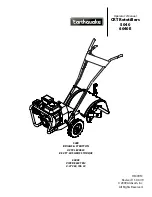
Chapter 4 — The QuadStat
49
be applied at the working electrode. Such an arrangement is shown in
If you need to reverse the polarity of the QuadStat, use
e-corder
. With these connections, when you use the software to set a
more positive voltage, a more reducing potential will be applied at the
working electrode.
By linking the E In positions with short wires you can control the
potentials of all electrode potentials simultaneously,
.
Check that all connectors are firmly attached. Loose connectors can
cause erratic behaviour, or may cause the QuadStat to fail to work.
Each QuadStat channel uses two
e-corder
input channels during normal
operation (for recording of the current and potential signals). The
remainder of this chapter assumes that you have connected the current
signal of QuadStat channel 1 to
e-corder
Input 1 and the potential
signal to
e-corder
Input 2, and other channels as shown in
. (It is also possible, when using Chart or Scope
software, to connect the QuadStat to other
e-corder
input channels in
which case the description that follows would change accordingly).
Trigger
Power
Status
Output
Input 1
Input 3
Input 2
Input 8
821
Input 5
Input 6
Input 7
Input 4
Channel 2
Channel 4
Channel 3
Channel 1
164
QuadStat
QuadStat
RE
RE
RE
AE
AE
AE
AE
Auxiliary and reference
electrode leads from
Channel 1. Use these when
the working electrodes are to
be used in the same reaction
vessel and a single auxiliary
and reference electrode are
required.
Use one, two, three, or
four working electrodes.
Note that the cable from the
e-corder
Output is not required for
constant potential experiments
between ±2.5 V
See also
Figure 4–7
The QuadStat shown
connected to an
e-corder
, front view,
using the connections
described in
.
Summary of Contents for Picostat
Page 8: ...4 eDAQ Potentiostats ...
Page 28: ...24 eDAQ Potentiostats ...
Page 44: ...40 eDAQ Potentiostats ...
Page 64: ...60 eDAQ Potentiostats ...
Page 104: ...100 eDAQ Potentiostats ...
Page 112: ...108 eDAQ Potentiostats ...
















































